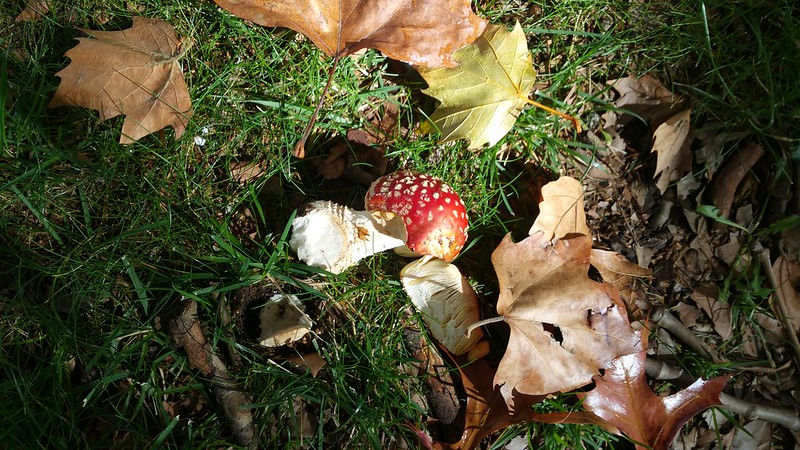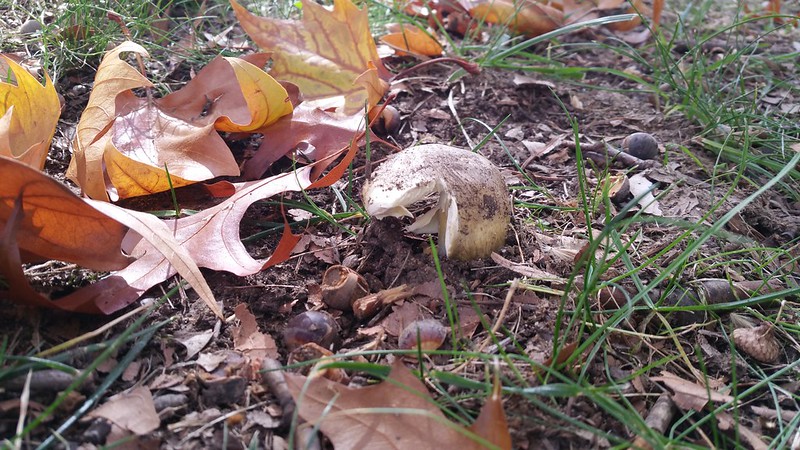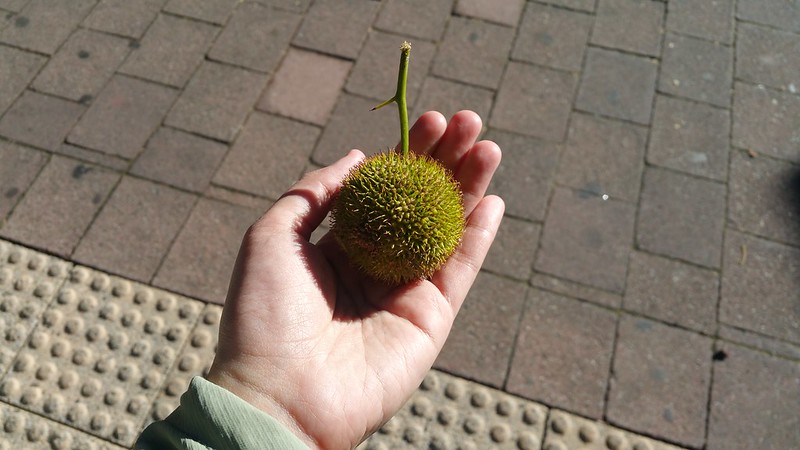
I used to be in Brownies when I was in primary school, which had all of its patrols named after fantastical (and decidedly Victorian/European) fairytale creatures such as PIXIES and ELVES (with all of these after-school activities naturally being european/british imports). Naturally everyone wanted to be a goddamned fairy, but when it came to the draw, I was designated to be in the GNOME PATROL. A wizened, landbound, garden gnome. Me and the rest of GNOME PATROL met every week to decide what 'Fun Thing' we would learn that week, like how to do ironing, how to sew a button, how to tie a round-turn-and-two-half-hitches, or recite the national anthem in Malay or something like that. For some reason my memory holds that we even sat around an actual model of a fairy toadstool that was plonked in the middle of our circle, although NO SUCH MUSHROOMS EVER EXIST IN SINGAPORE (CAN YOU UNDERSTAND HOW EXCITED I AM TO SEE ONE IN REAL LIFE).
As a young child unimpressed by the mundaneness of garden gnomes, on one of the first meetings after being assigned as GNOME I asked, "WHAT DO GNOMES DO? WHAT FANTASTICAL MAGIC POWERS DO GNOMES HAVE?". I was given the answer that "Gnomes come in and happily clean the house whilst you're not in". Ignoring the part where the poor gnome is mysteriously compelled to perform hard domestic labour for no remuneration, I remember then asking "But where do the Gnomes live if they don't live inside the house?" The teacher clearly struggled to invent an answer and eventually gestured towards the mushroom in front of us. "The gnomes live under the fairy toadstool?..." (Ah the fairytale origins of the English notion of the "mushroom hall"...)
Its worth noting that this predominantly northern hemisphere toadstool was actually first introduced to Australia together with the pine trees which had been imported over from Europe, so they always grow alongside the pine trees which are technically exotic to Australia.
Later, I returned to the same spot in hopes of sighting more of these delightful mushrooms in a less harried fashion, but I strangely could not find them despite combing the stretch for at least 20 minutes. Instead I found a load of boring mushrooms which resembled shiny, slightly greenish potatoes.

PICTURE DOES NOT REFLECT ACTUAL COLOUR, which was very distinctly greenish yellow and shiny
Not to be deterred by the boringness of the mushrooms, when I got back home I fired up the ol' Google machine to try to identify these mushrooms and to my horror...

...which explains all the overbearing DON'T EAT WILD MUSHROOM flyers found at tourist information points, as it appears some foragers with a passion for fresh food have even died... IN THIS SAME AREA IN CANBERRA!!! When viewed in person, the mushrooms in the picture above totally match the images in this article about death caps.
Royal Botanic Gardens Victoria notes that the Death Caps (Amanita phalloides) are "always under exotic trees, especially Oak (Quercus), including broad-leaved and cut-leaved oaks. There are reports of Amanita phalloides growing under Eucalyptus in Algeria and Tanzania, but there are no confirmed sightings of the Death Cap away from exotic trees in Australia."
How curious to describe the oaks that basically dominate many of the streets of Canberra civic as 'exotic' - but I guess likewise despite years of living in London and getting to know oak trees, the oak is possibly always going to be exciting and FOREVER EXOTIC to me, since I never grew up with oak trees.
And speaking of "exotic" trees, I noticed some of the seed balls of what I thought to be London Plane Trees were so big (exceeding 3cm) that I couldn't imagine they could be the same as the London Planes I had seen in London. So I had to read up on the whole Plane tree family...

It turns out that the humble London Plane is doubly exotic to Australia! A hybrid tree produced by the combination of oriental plane (P. orientalis) and American Sycamore (P. occidentalis) being brought together in the same place in the 17th century (location disputed: spain? london?) and reciprocal pollination occurred when the trees were next to each other... and then this hybrid being spread all over the world since it was found to be efficient in filtering out small particulate pollutants. Today it has surely become one of the most ubiquitous trees in many parts of London, and I've been observing it all over Canberra, Sydney, and Melbourne...





